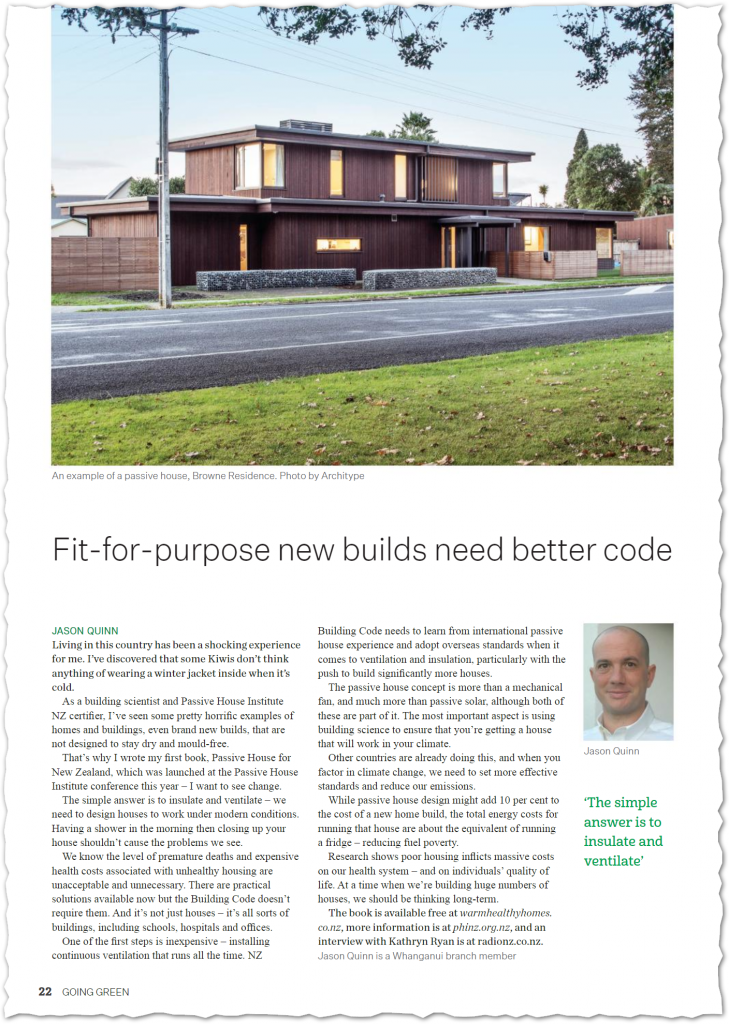
Living in this country has been a shocking experience for me. I’ve discovered that some Kiwis don’t think anything of wearing a winter jacket inside when it’s cold.
As a building scientist and Passive House Institute NZ certifier, I’ve seen some pretty horrific examples of homes and buildings, even brand new builds that are not designed to stay dry and mould-free.
That’s why I wrote my first book, Passive House for New Zealand, which was launched at the Passive House Institute conference this year – I want to see change.
The simple answer is to insulate and ventilate – we need to design houses to work under modern conditions. Having a shower in the morning then closing up your house shouldn’t cause the problems we see.
We know the level of premature deaths and expensive health costs associated with unhealthy housing are unacceptable and unnecessary. There are practical solutions available now but the Building Code doesn’t require them. And it’s not just houses – it’s all sorts of buildings, including schools, hospitals and offices.
One of the first steps is inexpensive – installing continuous ventilation that nuns all the time. NZ Building Code needs to learn from international passive house experience and adopt overseas standards when it comes to ventilation and insulation, particularly with the push to build significantly more houses.
The passive house concept is more than a mechanical fan, and much more than passive solar, although both of these are part of it. The most important aspect is using building science to ensure that you’re getting a house that will work in your climate.
Other countries are already doing this, and when you factor in climate change, we need to set more effective standards and reduce our emissions.
While passive house design might add 10 per cent to the cost of a new home build, the total energy costs for running that house are about the equivalent of running a fridge – reducing fuel poverty.
Research shows poor housing inflicts massive costs on our health system – and on individuals’ quality of life. At a time when we’re building huge numbers of houses, we should be thinking long-term.
The book is available free at warmhealthyhomes.co.nz, more information is at phinz.org.nz and an interview with Kathryn Hyan is at radionz.co.nz
